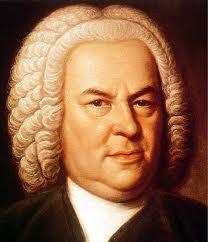|
Symphony
FROM THE NEW WORLD TO THE OLD WORLD
by Peter Lert
Saturday, June 14, 2025
Chamber
MC2 DUO RECITAL CLOSES 222'S SEASON
by Terry McNeill
Saturday, June 14, 2025
Choral and Vocal
CANTIAMO SONOMA'S LUSCIOUS A CAPELLA SINGING IN SEASON ENDING CONCERT
by Pamela Hicks Gailey
Sunday, June 8, 2025
Symphony
SRS SEASON ENDS WITH RESOUNDING TA-TA-TA-BANG
by Terry McNeill
Sunday, June 1, 2025
Symphony
YOUTHFUL VIRTUOSITY ON DISPLAY AT USO'S MAY CONCERTS
by Peter Lert
Saturday, May 17, 2025
Symphony
MYSTICAL PLANETS AND LIVELY GERSHWIN ORTIZ AT FINAL SRS CONCERT
by Peter Lert
Sunday, May 4, 2025
Symphony
VSO'S CONCERT MUSIC OF TIME, MUSIC OF PLACE
by Peter Lert
Sunday, April 27, 2025
VOCAL ELEGANCE AND FIRE AT THE 222'S RECITAL APRIL 26
by Pamela Hicks Gailey
Saturday, April 26, 2025
CANTIAMO SONOMA SINGS AN INSPIRED GOOD FRIDAY MOZART REQUIEM CONCERT
by Pamela Hicks Gailey
Friday, April 18, 2025
DRAMATIC SHOSTAKOVICH SYMPHONY CLOSES PHILHARMONIC'S 25TH SEASON
by Terry McNeill
Sunday, April 13, 2025
|
 |
 Composer J. S. Bach |
MORE INTENSE, MORE BEAUTIFUL, MORE DEVOTED
by Joanna Bramel Young
Saturday, December 15, 2012
Bach's B Minor Mass is one of the towering masterpieces of Western music, and on Dec. 15 the Sonoma Bach Choir and the Santa Rosa Symphony performed the Mass to a nearly full Weill Hall, with only a few empty seats behind the stage.
From the sweet, imploring opening notes of the “Kyrie eleison,” the audience knew it was in for an afternoon of glorious music. The choir has never sounded better and conductor Robert Worth rehearsed them well. His conducting was sure and precise as he drew every ounce of emotion from his singers.
In the interest of authenticity, the traditional symphony orchestra was pared down to the size of a baroque chamber ensemble. Solos were required of several of the musicians, and they demonstrated their virtuosity.
One of the most engaging features of this work is the great variety among its “movements.” Besides the chorus and orchestra, vocal soloists Carol Menke and Jenni Samuelson, sopranos, Jennifer Lane, mezzo-soprano, Scott Whitaker, tenor, and Paul Murray, bass-baritone, were able to take flight in both solo and duet arias.
The wonderful aria “Laudamus te,” sung by Carol Menke, with Symphony Concertmaster Joseph Edelberg providing violin accompaniment, was one of the many highlights of the first half. Ms. Menke’s line intertwined gracefully with the highly ornamented violin part, all supported by the organ and cello. Organist Phebe Craig’s playing was consistently solid, although this reviewer had difficulty hearing the organ from the back balcony.
In the duet “Domine Deus,” sung by Mr. Whitaker and Ms. Samuelson, flutist Kathleen Reynolds’s rendering of the long, sinuous melodies was exquisite, perfectly balanced by the cellos and contrabass in pizzicato. In Ms. Lane's singing of “Qui sedes,” Laura Reynolds played oboe d’amore with the gentle passion the aria required. Her instrument blended perfectly with the singer's deep, resonant mezzo voice.
Bach’s use of unusual instrumental combinations to create a variety of colors and textures was especially evident in Mr. Murray’s “Quoniam tu solus sanctus,” in which his voice was echoed by a French horn and two bassoons. In some choral sections, the addition of jubilant high trumpets and tympani punctuated such words as “Gloria!” and “Et resurrexit!” In the “Et incarnatus est,” stunning contrasts emerged when a poignant aria was followed by the chorus entering on a high note that slowly descended with each syllable to a low note--all enriched by the violins’ sighing, pleading theme.
Choir and orchestra blended beautifully. At the end of the “Crucifixus,” with its many dissonances and suspensions, the entire ensemble ended on a pianissimo, only to explode in the “Et resurrexit!” The chorus negotiated the tortuous allegro phrases with great precision, every word clear.
In the next-to-last movement, “Agnus Dei,” Ms. Lane was accompanied by violins playing in unison, supported by organ continuo. The simplicity of the orchestration heightened the aria’s poignancy. This was followed by the grand conclusion, the “Dona nobis pacem.” Beginning pianissimo, the sound slowly swelled to a joyful climax with the entry of trumpets and tympani.
In a pre-concert statement, Symphony Executive Director Alan Silow, responding to the recent tragedy in Connecticut, quoted Leonard Bernstein: “This will be our reply to violence: to make music more intensely, more beautifully, more devotedly than ever before.” Bernstein’s words were truly borne out with what one hopes is the first of many choral specials in the Green Music Center.
|
